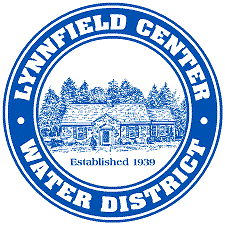Published April 28, 2021

By DAN TOMASELLO
LYNNFIELD — The Lynnfield Center Water District’s $9.8 million capital improvement project is a wise investment for ratepayers, CDM Smith project engineer Mike Nelson said during the Board of Commissioners’ April 20 meeting.
LCWD ratepayers will be asked to approve the capital improvement project during the Annual District Meeting, which will take place on Monday, May 10, beginning at 6 p.m. at Lynnfield High School’s front entrance.
“The warrant includes an article that the Board of Commissioners has endorsed to request authorization to borrow up to $9.8 million to upgrade our water system,” said LCWD Superintendent John Scenna.
The projects involve upgrading the LCWD’s existing infrastructure as well as getting supplemental water from the Massachusetts Water Resource Authority (MWRA) via Wakefield.
In order to address the discolored water issues impacting residents living near the North Reading line, LCWD officials have proposed building a $6.3 million greensand filter treatment plant at the Glen Drive station in order to treat iron and manganese.
The supplemental water project involves connecting the Wakefield and LCWD systems at the Main Street and Bay State Road intersection. The cost to connect with Wakefield totals $1.6 million. This project also includes a $1.5 million entry fee to join the MWRA as well as $400,000 for permitting costs.
LCWD officials anticipate the three projects would result in an average water bill increase of $200, which will be phased in over several years. If ratepayers approve the projects, they will be completed by 2023.
Scenna noted that some ratepayers have asked LCWD officials why they are recommending the two-component plan instead of trying to get all of the district’s water from the MWRA.
Nelson recalled that the LCWD recently finalized a 2020 statistical report that was given to the Massachusetts Department of Environmental Protection. He said the LCWD produced over 240 million gallons of water last year.
“The reason why the LCWD went into a Level 5 water emergency last summer is because demand exceeded the district’s ability to pump water,” said Nelson. “The demand was 1.2 million gallons-per-day, and the district was only able to produce 1.1 million gallons.”
Nelson said the Glen Drive station produced 40 percent of the LCWD’s water last year.
“Glen Drive was able to produce 178 gallons-per-minute in 2020,” said Nelson. “It’s maximum is 208 gallons-per-minute and it’s design yield approved by DEP allows the Glen Drive station to produce 575 gallons-per-minute. The reason why Glen Drive is operating much less is because the harder we pump it, the more iron and manganese issues we have. We can’t push it that hard.”
While Nelson said it’s doubtful that the new treatment plant will allow the Glen Drive station to produce 575 gallons-per-minute, he said the renovated station will be able to do “much better than 178 and 208.”
In order to increase water production at the Glen Drive station, Nelson said a greensand filter plant has to be built in order to treat iron and manganese. He recalled that a similar treatment plant was built at the Philips Road station in the 1990s.
“We can’t bring 100 percent of MWRA water through Wakefield,” added Nelson. “The hydraulics don’t work. If we shut down the Glen Drive station, we will still need to keep the Philips Road and Main Street stations on line.”
Nelson said it will be more expensive to receive all of the district’s water from the MWRA than it will be to build the greensand filter treatment plant.
“MWRA water rates are projected to increase 3.9 percent every year through fiscal year 2029,” said Nelson. “That could change slightly, but the MWRA is very good at financial forecasting. The MWRA water rate is growing and Wakefield is adding on a premium to it for their expense to transport the water to the district.”
Scenna informed the Villager that if the LCWD shut down its existing infrastructure and joined the MWRA, the initiation fees would cost between $5-$6 million. He also said there will be expensive infrastructure costs the district will need to pay for in order to join the MWRA.
While Nelson said LCWD’s rates will increase if the project passes, he said the rates will be less expensive than the ones instituted by the MWRA. He also noted that the district will still be required to pay for fixed costs such as salaries, insurance, debt service and the chemicals needed to treat the water even if the LCWD joins the MWRA.
“Taking Glen Drive offline does not translate into savings,” said Nelson. “The fixed costs to run the LCWD will remain even if the district gets all of its water from the MWRA.”
Water Commissioner Jack Adelson agreed.
“We are not saving a lot by shutting Glen Drive down,” said Adelson.
Nelson said it’s “more affordable” for the LCWD to produce water than it is to get all of the district’s water from the MWRA. He said DEP officials informed the LCWD that the district will still need to abide by water restrictions even if it doesn’t get water from the Ipswich River basin anymore.
“DEP told us even if we received 100 percent of MWRA water, there will still be water restrictions,” said Nelson. “The recommended plan is less capital cost. The district’s cost to produce water is less than it is to buy water from the MWRA at the wholesale rate. Abandoning Glen Drive does not result in significant operational cost savings.”
Nelson said the recommended capital improvement project will diversify the LCWD’s water sources.
“It provides flexibility because we will be permitting for the entire volume that the district needs,” said Nelson. “If needs change in the future, we have already got that taken care of. It also provides more room for growth because the LCWD will be bringing in more water than it has ever had. If there is growth in the district, the district won’t have to turn customers away.”
Nelson also said the plan is “financially sound.”
“I think this is the most economically feasible way to get the district where it needs to be,” said Nelson.
Water Commissioners Chairman Joe Maney asked how much water Station 1 will be able to produce if the DEP allows the LCWD to bring it back into service. This component of the project would be funded through the LCWD’s operating budget.
“We were getting 50 gallons a minute pretty consistently when Station 1 was being used last summer,” said Nelson. “We only used Station 1 for two months and we pulled up 1.2 million gallons of water from that station. If we can keep that in service for six months, that is going to be a real help.”
While there were no members of the public who weighed in on the project after the presentation, Maney urged ratepayers to reach out to LCWD officials if they have any questions.
“The three commissioners are not going to approve this project,” said Maney. “The 2,600 ratepayers are. If people have questions, call the office or email us.”
Scenna concurred with Maney’s viewpoint.
“All of us hope the project does move forward,” said Scenna. “It will create a sustainable system for the future. We have studied countless options, and we are ready to roll up our sleeves and bring it to the next step. We hope that the district will give us the authorization to do that.”




